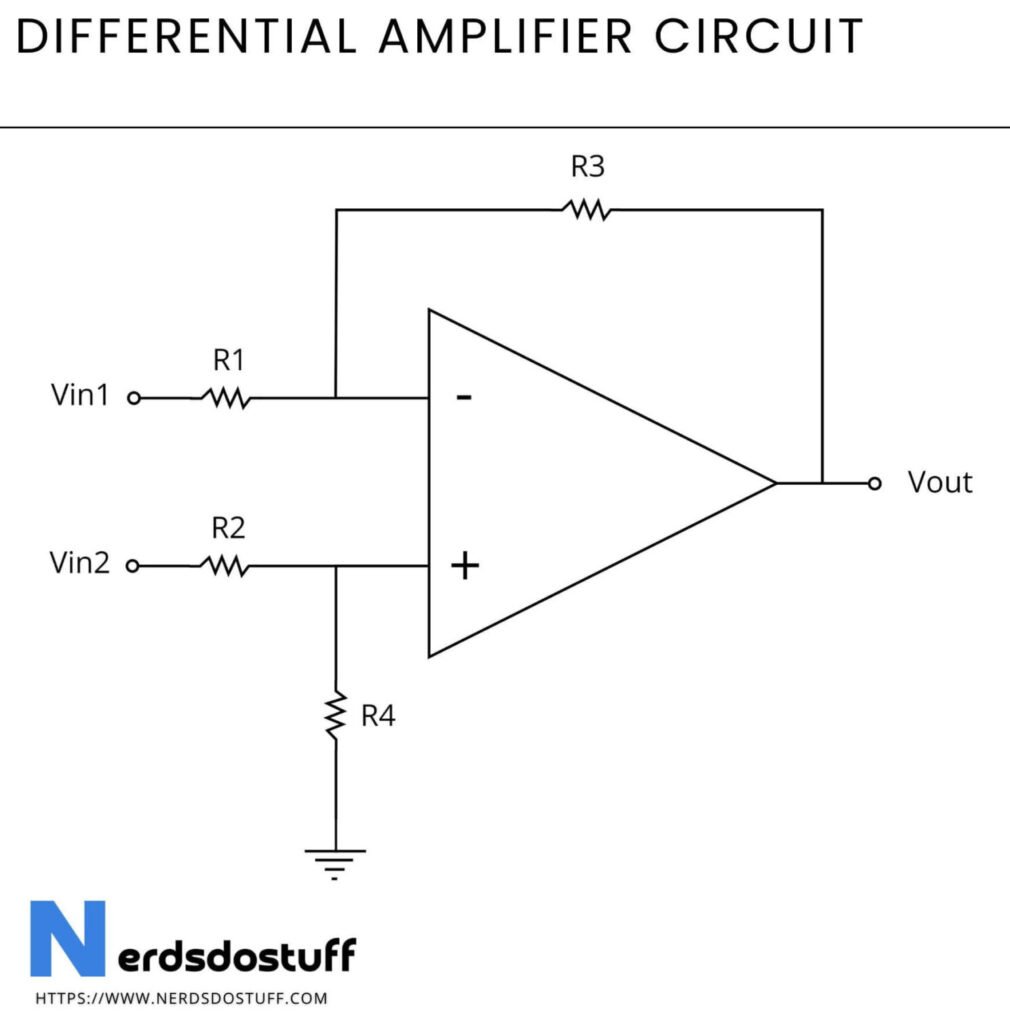What is Differential Amplifier ?
A differential amplifier is a type of electronic amplifier that amplifies the voltage difference between two input signals while rejecting any signals that are common to both inputs. It typically consists of two amplifying stages connected in a differential configuration, with each input signal applied to one input of the amplifier. The output voltage of the differential amplifier is proportional to the voltage difference between the two input signals, multiplied by the amplifier’s gain. Differential amplifiers are commonly used in instrumentation, communication systems, and audio applications, where they provide high common-mode rejection and accurate amplification of differential signals. They are particularly useful for extracting small signals from noisy environments or for measuring the difference between two similar signals.
Differential Amplifier Circuit

Working of Differential Amplifier
A differential amplifier works by amplifying the voltage difference between two input signals while rejecting any signals that are common to both inputs. It typically consists of two amplifying stages connected in a differential configuration, where each input signal is applied to one input of the amplifier. When the voltage at one input increases relative to the other, the corresponding amplifier stage increases its output voltage while the other decreases, resulting in an amplified output voltage that represents the difference between the two input voltages. This differential operation allows the amplifier to effectively reject any signals that are common to both inputs, such as noise or interference, while amplifying the desired differential signal. Differential amplifiers are commonly used in applications where accurate amplification of small differential signals is required, such as in instrumentation, communication systems, and audio equipment.
Characteristics of Differential Amplifier
| Characteristic | Description |
|---|---|
| Configuration | Typically consists of two amplifying stages connected in a differential configuration. |
| Input Signals | Accepts two input signals and amplifies the voltage difference between them. |
| Common-Mode Rejection | Provides high rejection of signals that are common to both inputs, such as noise or interference. |
| Gain | Amplifies the voltage difference between the input signals by a certain factor, determined by the amplifier’s gain. |
| Balanced Outputs | Produces two output voltages that are balanced around a common-mode voltage. |
| Linearity | Maintains linearity over a wide range of input voltages, ensuring accurate amplification of differential signals. |
| Applications | Commonly used in instrumentation, communication systems, audio equipment, and differential signaling applications where accurate amplification of differential signals is required. |
Applications of Differential Amplifier
- Instrumentation Amplifiers: Differential amplifiers are often used as the front-end stage in instrumentation amplifiers, where accurate amplification of small differential signals is required. They are commonly employed in measurement and testing equipment for applications such as data acquisition, medical instrumentation, and industrial control systems.
- Communication Systems: Differential amplifiers play a crucial role in communication systems, where they are used to amplify differential signals transmitted over long distances. They are commonly found in modem circuits, line drivers, and receiver stages of communication equipment to improve signal quality and reduce interference.
- Audio Equipment: In audio applications, differential amplifiers are used to process balanced audio signals, providing improved noise rejection and signal fidelity compared to single-ended amplifiers. They are commonly used in professional audio equipment such as microphone preamplifiers, audio mixers, and studio monitors.
- Automotive Electronics: Differential amplifiers are widely used in automotive electronics for various purposes, including sensor signal conditioning, engine control, and onboard communication systems. They help improve the accuracy and reliability of sensor measurements in automotive applications such as engine management, vehicle stability control, and safety systems.
- Differential Signaling: Differential amplifiers are essential components in differential signaling systems used for high-speed data transmission, such as USB, HDMI, and Ethernet interfaces. They are used to amplify and process differential signals while providing common-mode rejection, ensuring reliable data communication in noisy environments.




